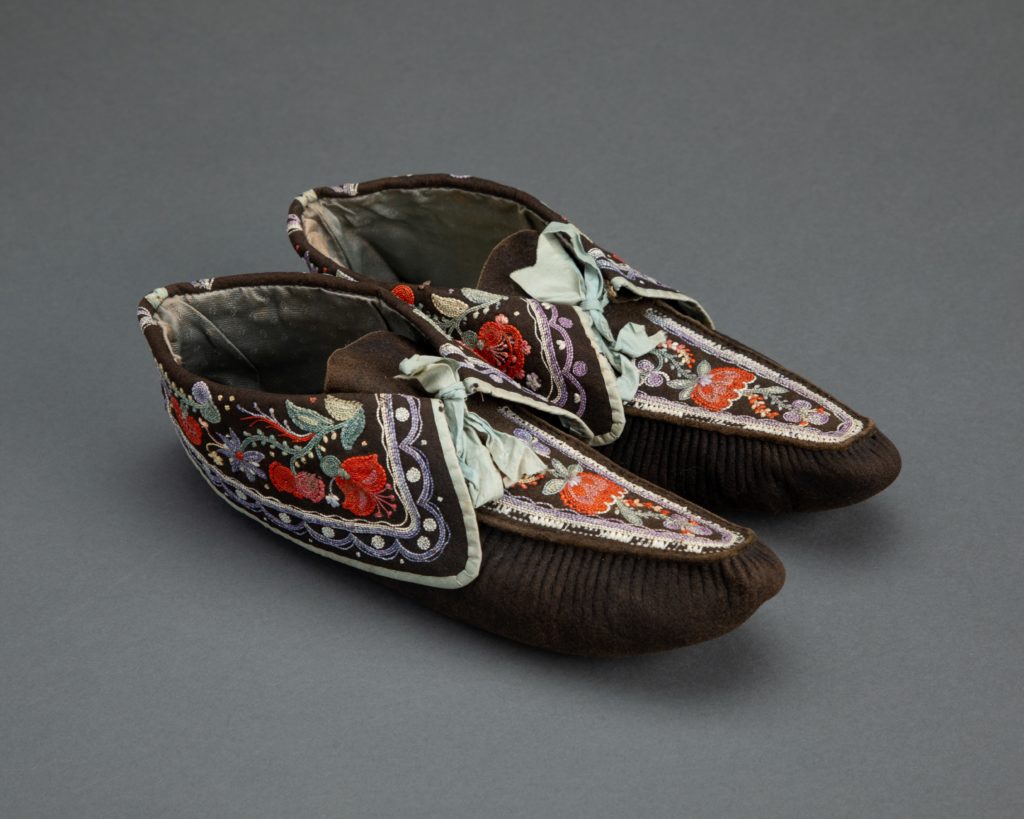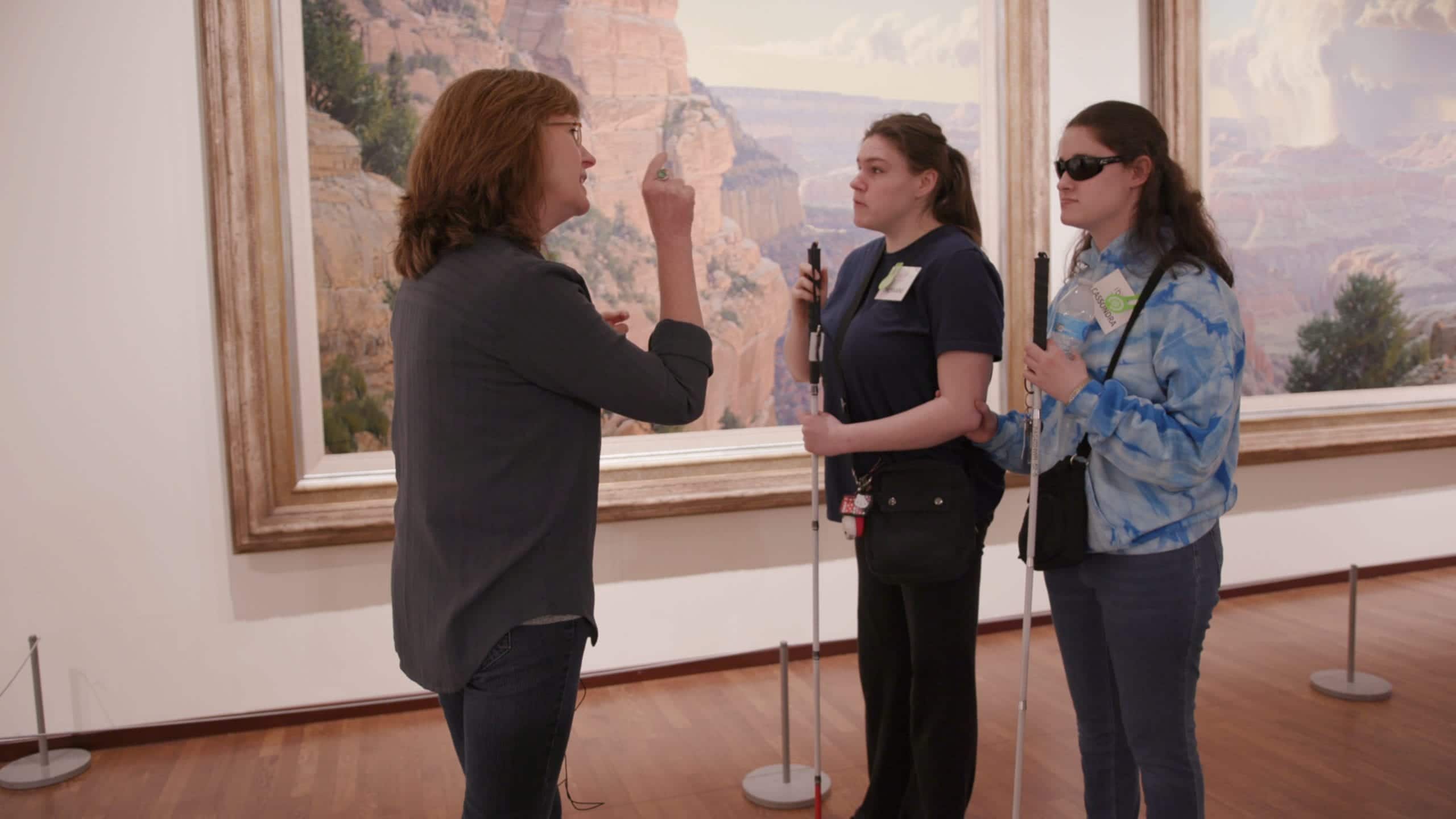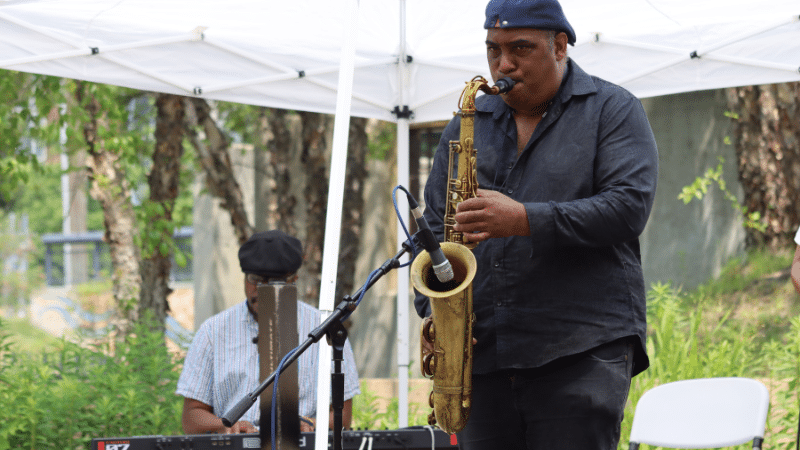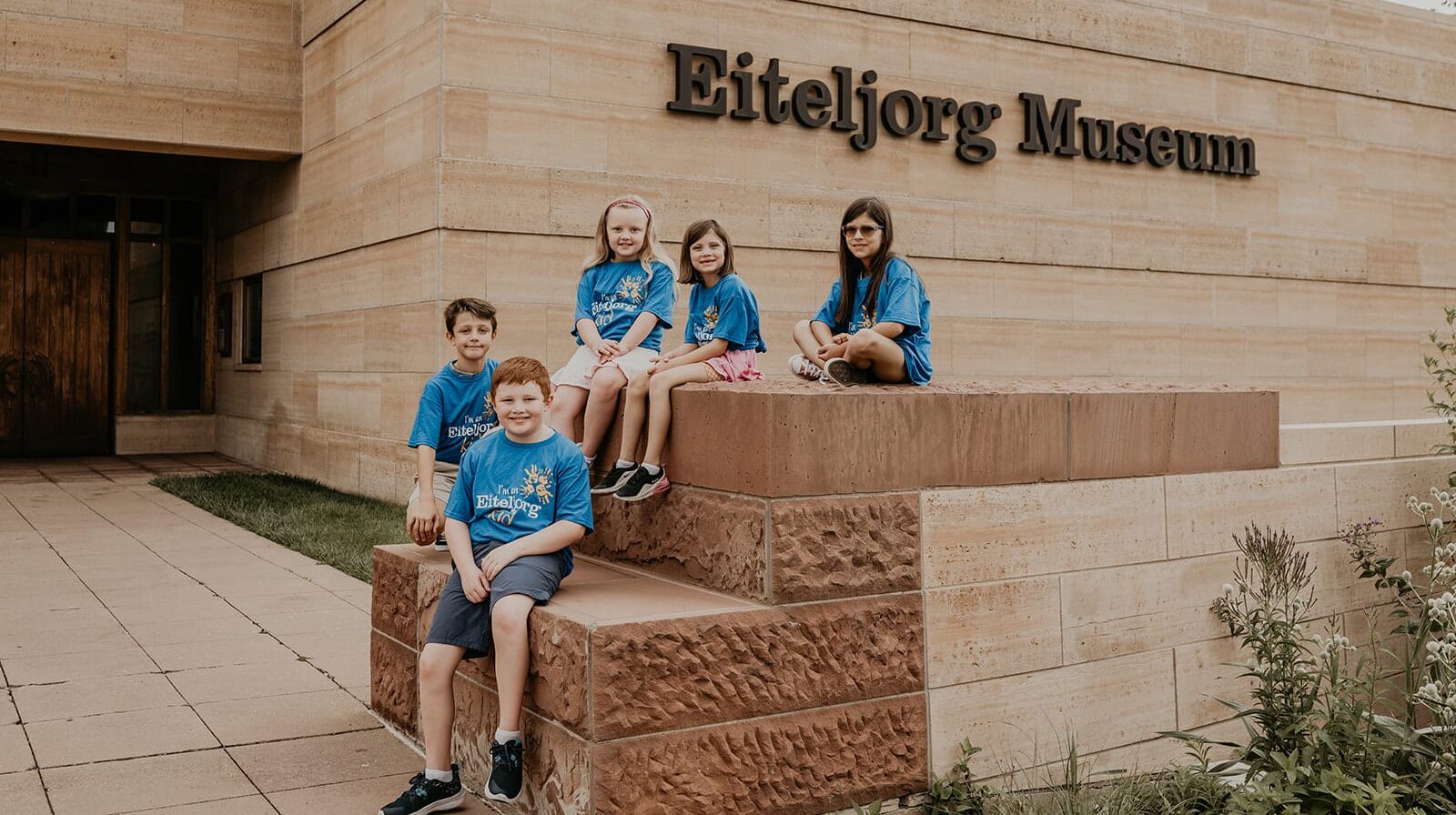Cozy Toes: Beautiful Examples of Moccasins in the Eiteljorg’s Collections
By Camryn Daniels, marketing and communications intern

Today, the term moccasin is commonly understood, but how much do people really know about the footwear? Often associated with specific Native American cultures, moccasins usually consist of one piece of fabric, a soft leather such as deer, elk, or cow, with a flexible sole; and the sides and tops of the shoes are typically decorated.
The Eiteljorg Museum has in its collections many exceptional moccasins from different time periods, and some are on exhibit in its new Native American Galleries. The museum acquired a number of pairs of moccasins from the Great Lakes region in 2019 with the help of a Lilly Endowment Inc. grant. One pair of Otoe moccasins is carefully decorated with an array of colorful beads, strategically placed in a pattern which spans across the tops and sides. A tight knot near the bend of the ankle secures the footwear in place. This pair is made of tanned buffalo hide with rawhide soles, and the beads are made of glass. They were created by an unrecorded Otoe artist between 1885 and 1905.

The word “moccasin” comes from the Algonquin language family. For centuries, Native artists have typically made moccasins using a variety of tanned animal hides, and decorated them with materials such as glass beads, dyed porcupine quills, metal cones and spots, paint, velvet and cotton. Native moccasins are still worn by some Native/First Nations peoples today; and footwear inspired by moccasins is also worn by non-Native peoples around the world. While some Native moccasins may be perceived as “traditional,” it is important to remember that tradition is not a static thing, but something that changes and evolves as freely as the people to whom it belongs.
In the words of the Eiteljorg’s curator of Native American art, Dorene Red Cloud (Oglala Lakota), “Native art is on a continuum; what was created hundreds of years ago was contemporary and what will be created hundreds of years from now will still have roots in traditional or customary art practices.”
The earliest pair of moccasins in the museum’s collections is a black-dyed deerskin pair attributed to an unrecorded Wyandot artist, made around 1850-1860. As with many objects in the museum, the age of 19th century moccasins makes them delicate and they require careful storage and conservation. The Eiteljorg houses more than 200 pairs of moccasins in its collections and a few singles, all meticulously managed by the collections staff, including Collections Manager Rebekah Ryan.

Some of the materials in the museum’s moccasins are very sensitive to light. For example, silk or dyed decorative threads can only be on exhibit and exposed to light for limited times, or they will fade. Additionally, since they are footwear, some of them show significant wear on the soles from their original owners that may require close attention by collections staff.
The Eiteljorg’s moccasins are stored in a dark, pest-free environment with regulated temperature and humidity. Padding on the inside supports the shape of each moccasin so visitors can see them as they were worn. All these methods combined help the items last for many generations to enjoy.
Today, Native moccasins and moccasin-inspired footwear are worn by people throughout the world who enjoy their warmth, comfort and styles. A “worldwide Native American and Indigenous Peoples virtual unity event,” titled Rock Your Mocs, occurs every November. This annual event is a time in which some Native American and Indigenous Peoples choose to wear moccasins throughout the week with the intent of celebrating their cultures and creating a “positive opportunity to celebrate tribal individuality united by wearing moccasins,” as well as “honor (their) ancestors, and indigenous peoples worldwide,” according to the organization.
Native moccasins today share many design and structural similarities with moccasins of the past, as the latter were sturdy and built to last. Many family designs or cultural markers still are passed down by contemporary makers, but the decorative materials used, such as neon-colored beads or a polyester fabric, are the most recognizable differences between contemporary moccasins and those created hundreds of years ago.
To see some examples of Native moccasins in the Eiteljorg’s collections, visit the museum’s exhibition Expressions of Life: Native Art in North America, open during regular museum hours.
Image captions:
Unrecorded Otoe artist
Otoe, 1885-1905
Tanned buffalo hide with rawhide soles, glass seed beads
Part A: 3 1/8 × 4 1/2 × 10 in. (7.9 × 11.4 × 25.4 cm)
Part B: 2 7/8 × 4 1/4 × 9 3/4 in. (7.3 × 10.8 × 24.8 cm)
Museum purchase with funds provided by a grant from Lilly Endowment, Inc.
2019.2.153 A-B
Unrecorded Wyandot artist
Native American Art, Customary Art, 1850-1870
black dyed deerskin with embroidered moose hair, silk ribbon, silk cloth
Part A: 3 × 3 × 9 1/2 in.
Part B: 2 3/4 × 3 1/2 × 9 1/4 in.
Museum purchase with funds provided by a grant from Lilly Endowment, Inc.
2019.2.162 A-B







